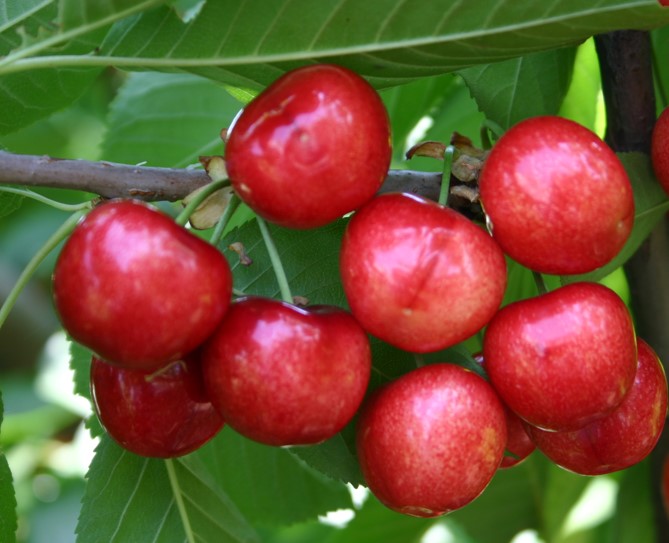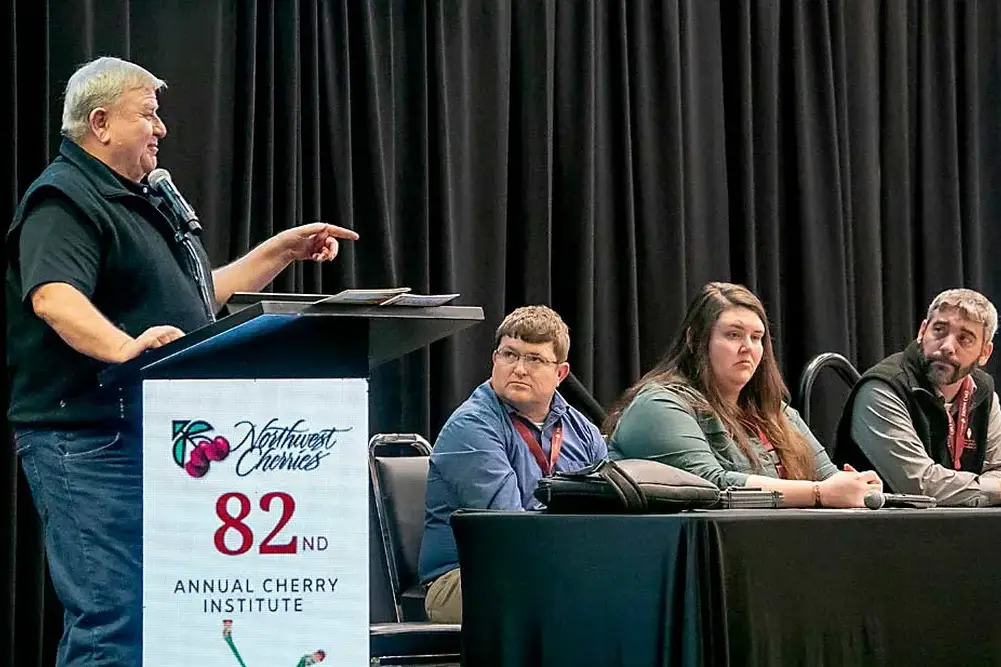Over 500 people attended the first online lesson of the “Cherry Course: management strategies to obtain quality fruits” by Mundoagro Capacita, sponsored by key industry companies such as Agrovit, Servalesa, Manvert, and Corteva Biologicals (Ex Stoller).
The course instructor, Christian Gallegos, a consultant specializing in blueberries and cherries, founder of Berrycherry and technical director of CropSolutions, addressed the topic of using hormonal regulators to improve fruit set and size. “The cherry tree is a forest species that produces a large amount of fruiting wood and vegetative growth.
The fruit has a high respiration rate, making it a very perishable fruit over time; it is a deciduous species, shedding its leaves during winter to go through this winter dormancy."
“It is a difficult plant to branch, with high cold requirements and high heat requirements, allowing it to go through phenological processes during the season. An important aspect is that the cherry tree has a short and fast cycle, from flowering to harvest. For example, depending on the area and variety, it ranges from 55-60 days, and in the later varieties, up to 80 days,” explained the agronomist.
According to the consultant, the cherry tree is a species that has its induction in November, a period when fruit growth ends, and it enters the phase that defines the production potential for the next season.
“Regarding the production component, it is made up of three structures: the first is the spurs per plant or fruit center (variety/rootstock combination); the second is the buds per spur or at the base of the shoot (variety/rootstock combination and spur age); the third point is the flower buds per bud (variety/rootstock combination and location).”

These components lead to a percentage of fruit set, which is determined by various factors, such as flower differentiation (flower quality), which depending on the area, occurs in February and March, where the quality and structure of the flower are defined.
“Other important characteristics include the proper entry into dormancy, which is related to the mobilization of reserves generated in the summer; the accumulation of winter cold, which is important for the maturation of floral structures but also plays a role in the homogeneous and rapid mobilization of these reserves for fruiting centers."
"This is followed by the quantity of reserves; the presence of frosts, which this year affected some areas more than others, influencing the final fruit set percentage; the irradiation during flowering, for example, we have seen that in spring, a high level of irradiation leads to better bee flights. Other key aspects are the temperature at the time of flowering, the behavior of pollinators, desynchronization in self-sterility, and pollen vitality.”
Gallegos explained that by understanding the plant structure, we can define these fruiting centers, which are the spurs, and are made up of a central bud, which is vegetative, and is surrounded by flower buds. “Then comes the twig base, where, for example, in varieties like Kordia, the first part of the fruit is produced on the twigs,” he explained.
Another important point highlighted by the expert is that “when the cooling requirements are not met, heterogeneous and very long flowerings occur; poor and disordered flower development; poor and irregular movement of reserves (starch); poor flower quality due to anther malformations; reduced fruit set (cross-pollination), and deformed fruits of low caliber with irregular ripening.”
Source: Mundoagro
Image: SL Fruit Service
Cherry Times - All rights reserved













